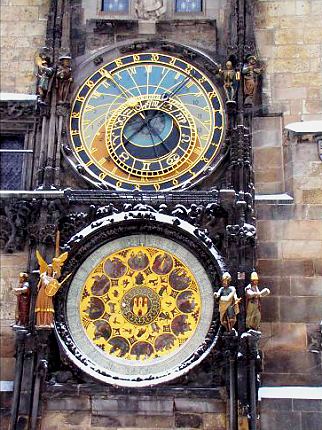MACHINERY
OF CLOCK
Did you know that most of the 350 components of the clock machinery of the Prague astronomical clock are still original pieces?
TECHNOLOGY – PRAGUE ASTRONOMICAL CLOCK

The machinery of the astronomical clock controls all the movements of the astrolabe. The technical solution of this complex function is all the more remarkable if we consider that the clock originates from the era of the very beginnings of horology.
At the heart of the machinery are three large cogs with a diameter of more than one metre. The cogs are original pieces from the year 1410 and were manually produced using only blacksmith's tools. The three forged cog of the main machinery are unique. Each cog has a different number of teeth. One is for the movement of the signs of the zodiac (365 teeth), the second for the movement of the Sun (366 teeth) and the third for the movement of the Moon (379 teeth).
At the time of origin of the astronomical clock, drilling into metal was not yet known iron working. It was possible to bend or file the then soft iron cold. Other functions had to be performed when the iron was hot – separation of material and chiselling was the basic function of the blacksmith. The product obtains its future shape through stretching and hammering. Through the use of fire it is possible to weld and forge parts together, such as rims and clamps. The blacksmith pierced through openings and in joining two constructions together used forged wedges. He was also able to join by hot welding and forge welding. Pieces were joined together through punched openings by riveting.
GALLERY OF PRAGUE









 Book your guide
Book your guide